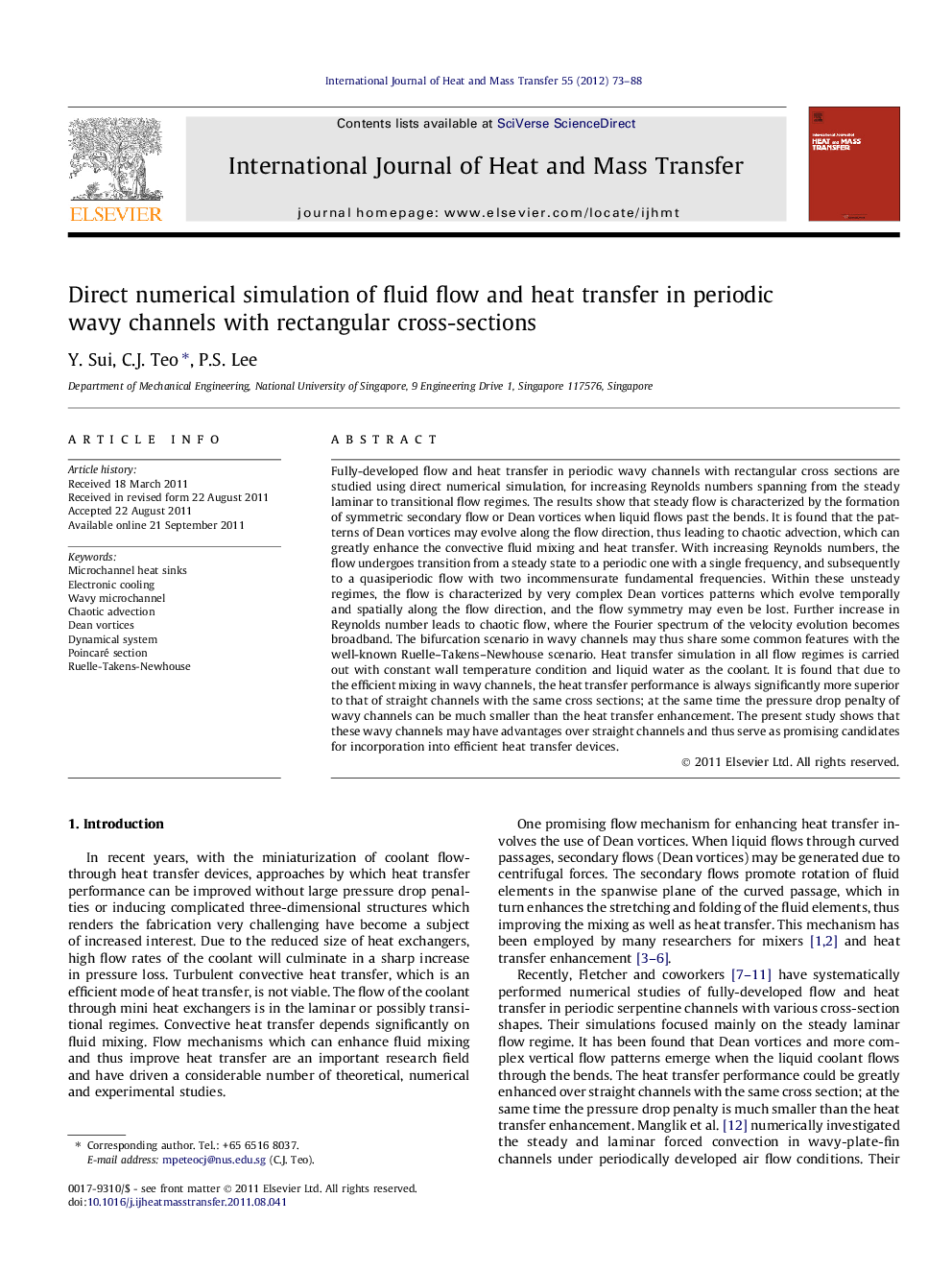| Article ID | Journal | Published Year | Pages | File Type |
|---|---|---|---|---|
| 660205 | International Journal of Heat and Mass Transfer | 2012 | 16 Pages |
Fully-developed flow and heat transfer in periodic wavy channels with rectangular cross sections are studied using direct numerical simulation, for increasing Reynolds numbers spanning from the steady laminar to transitional flow regimes. The results show that steady flow is characterized by the formation of symmetric secondary flow or Dean vortices when liquid flows past the bends. It is found that the patterns of Dean vortices may evolve along the flow direction, thus leading to chaotic advection, which can greatly enhance the convective fluid mixing and heat transfer. With increasing Reynolds numbers, the flow undergoes transition from a steady state to a periodic one with a single frequency, and subsequently to a quasiperiodic flow with two incommensurate fundamental frequencies. Within these unsteady regimes, the flow is characterized by very complex Dean vortices patterns which evolve temporally and spatially along the flow direction, and the flow symmetry may even be lost. Further increase in Reynolds number leads to chaotic flow, where the Fourier spectrum of the velocity evolution becomes broadband. The bifurcation scenario in wavy channels may thus share some common features with the well-known Ruelle–Takens–Newhouse scenario. Heat transfer simulation in all flow regimes is carried out with constant wall temperature condition and liquid water as the coolant. It is found that due to the efficient mixing in wavy channels, the heat transfer performance is always significantly more superior to that of straight channels with the same cross sections; at the same time the pressure drop penalty of wavy channels can be much smaller than the heat transfer enhancement. The present study shows that these wavy channels may have advantages over straight channels and thus serve as promising candidates for incorporation into efficient heat transfer devices.
